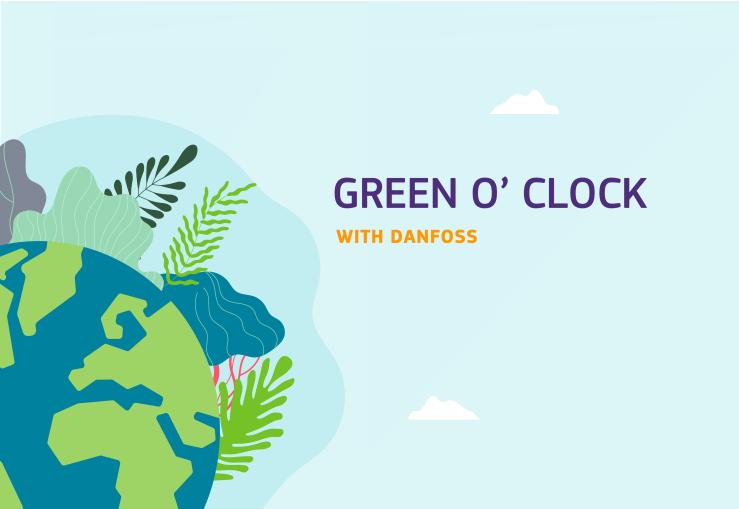Danfoss, the Danish corporate focused on energy-efficient solutions, is now embarking on an ambitious journey to become CO2 neutral in all of the company’s global operations by 2030. To achieve this goal, Danfoss joined Europe’s first “Greenathon”, hosted by the EIC. The multinational company is working systematically to reduce the environmental impact of the company’s operating activities, while monitoring of the consumption of materials, chemicals, energy, and the production of waste. The weekly Green O’Clock got us together with Dietmar Baro, Vice President R&D and Engineering at Danfoss.
What is Danfoss currently doing to adhere to the points set out in the EU Green Deal?
Danfoss is committed to becoming CO2 neutral by 2030. The focus on energy efficiency and electrification is at the very core of our business, and we work on it every day. Our goal is to showcase that green growth is indeed possible. Since 2007, we have reduced our energy intensity by 43 per cent and our CO2 power by 25 per cent. To give you an example: in 2014 we built a solar panel park at our headquarter in Nordborg, Denmark, and in 2020, until now, we have produced 1,300 MWh of energy, all consumed by Danfoss Nordborg.
What motivated your participation in the EIC Greenathon?
The EIC Greenathon is a great opportunity for Danfoss to get in contact with start-ups that might lie outside our typical horizon. An external field of participants offers different perspectives, which give valuable input to our range of solutions and inspire us to “think out of the box” and develop the right systems and products to fit the customers’ needs. Life is a learning process, and new perspectives offer wonderful growth opportunities.
How does the EIC Greenathon fit into your strategy goals related to sustainability?
Our passion for energy efficiency and electrification is directly linked to our four Sustainable Development Goals in Clean Water & Sanitation, Affordable & Clean Energy, Sustainable Cities & Communities and Responsible Consumption and Production. The challenge for the EIC Greenathon in thermal system topology demands effectively managing temperatures across different subsystems on board of electrified vehicles and machinery, and this touches all four sustainability goals. If we combine and simplify thermal systems, increase energy efficiency, save water, reduce pollution, and encourage intelligent transportation solutions, we can achieve and positively change the global sustainable goals together. At Danfoss, we have deliberated on this question for a long time: how can we combine multiple thermal systems in transportation into one system that provides heating and cooling?
What are the benefits/advantages of working with the EIC and its portfolio in this particular format?
It is a huge advantage for Danfoss that we get the possibility to search for new, competent, and inspirational SMEs and partners through the European Innovation Council. Another advantage is that the European Innovation Council already has access to an extensive pool of partners/companies that deal with the same/similar topics daily.
What are you expecting to get out of the EIC Greenathon? When is it a success for you?
We expect that the EIC Greenathon will connect us to potential partners who will enrich us with new solutions, ideas, and inspiration in the field of thermal management. It would be a success if together, we can develop a new type of thermal system to meet the customer’s need and thereby achieve or even outperform the Sustainable Development Goals.

DISCLAIMER: This information is provided in the interest of knowledge sharing and should not be interpreted as the official view of the European Commission, or any other organisation.

